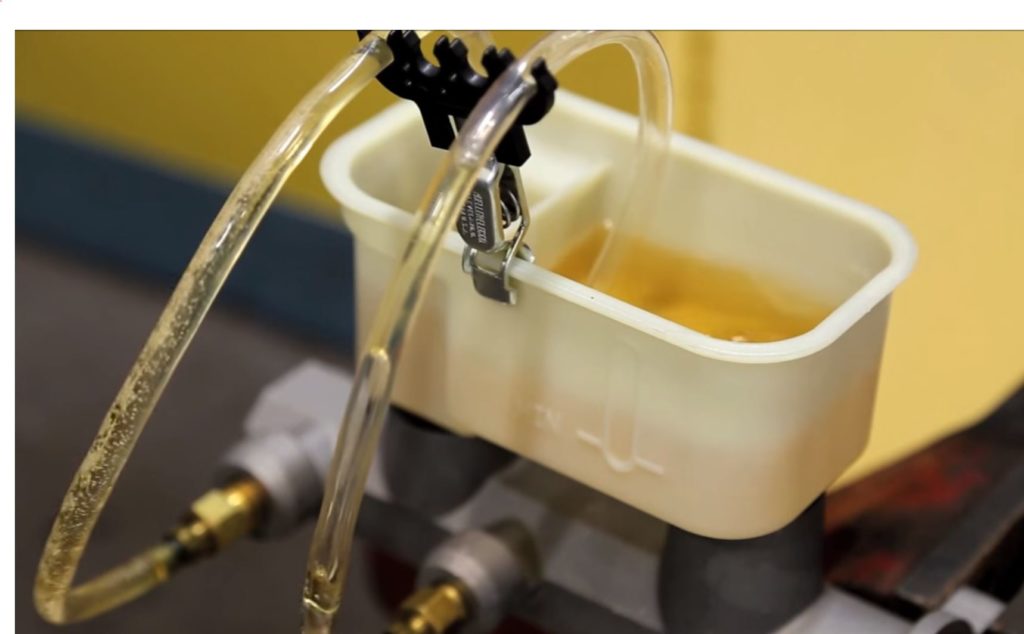
If you need to replace or install a brake master cylinder, you’re going to have to “bench bleed” it before bolting the assembly to your firewall.
That’s because, due to the angle at which the master cylinder sits when installed, bubbles can become trapped in an un-bled master cylinder’s fluid passages.
To make matters worse, those bubbles typically can’t be forced out with simple pedal pressure.
In those situations, since there are permanently-trapped bubbles in your brake system, your brakes can never be fully “bled” and you’ll be doomed to a perpetual squishy brake pedal.
That’s why properly bench bleeding your master cylinder is an important step to take BEFORE you go to install it.
Thankfully, the process isn’t too difficult, as this video from the brake brainiacs over at Raybestos will demonstrate.
In fact, there are two popular methods to finish the job—and Raybestos will show you both in this video.
The first method requires you to plug the master cylinder ports (with the plugs that presumably came with your new master cylinder). The second method requires a master cylinder bleeder kit with the adapters and hoses to recirculate the brake fluid, which can be sourced separately at minimal cost.
A third method, not shown in the video, involves using a syringe to shoot brake fluid “backward” from the lower ports up into the reservoir.
The video notes that, when compressing the piston, you shouldn’t use something pointy (like a screwdriver) that could slip and scar the bore walls. We’ve had good luck using a wooden dowel with beveled edges.
Even if your master cylinder isn’t currently in need of replacement, the video is a good watch that will demonstrate some important nuances of your brake system.

looks like a clean set up, no spilling.
I especial like the hands of the assistant very accommadation to the membrane
No way—there was still air in the second case, indicating the first case wasn’t sufficient.
In the first case it was noted the master cylinder would be at the wrong angle if mounted to firewall for bleeding , so at what angle should it be held at for bench bleeding?
Hey Larry, in my experience, it’s best to clamp it flat, parallel with the floor. I actually used one of these Multipurpose Folding Workbench tables with a bubble level along top of the MC body to make sure. But! Once it was done, I shifted it slightly forward and back and did a few more pumps—just as a redundant measure to ensure there were no bubbles trapped. A few light wraps with a screwdriver handle can help bubbles purge out too.